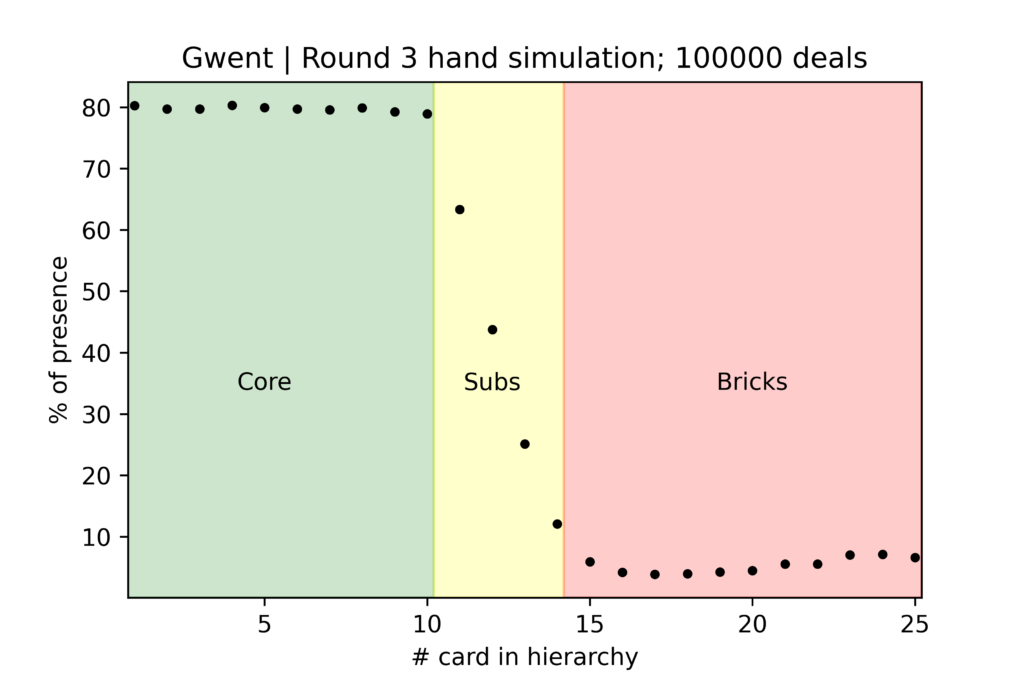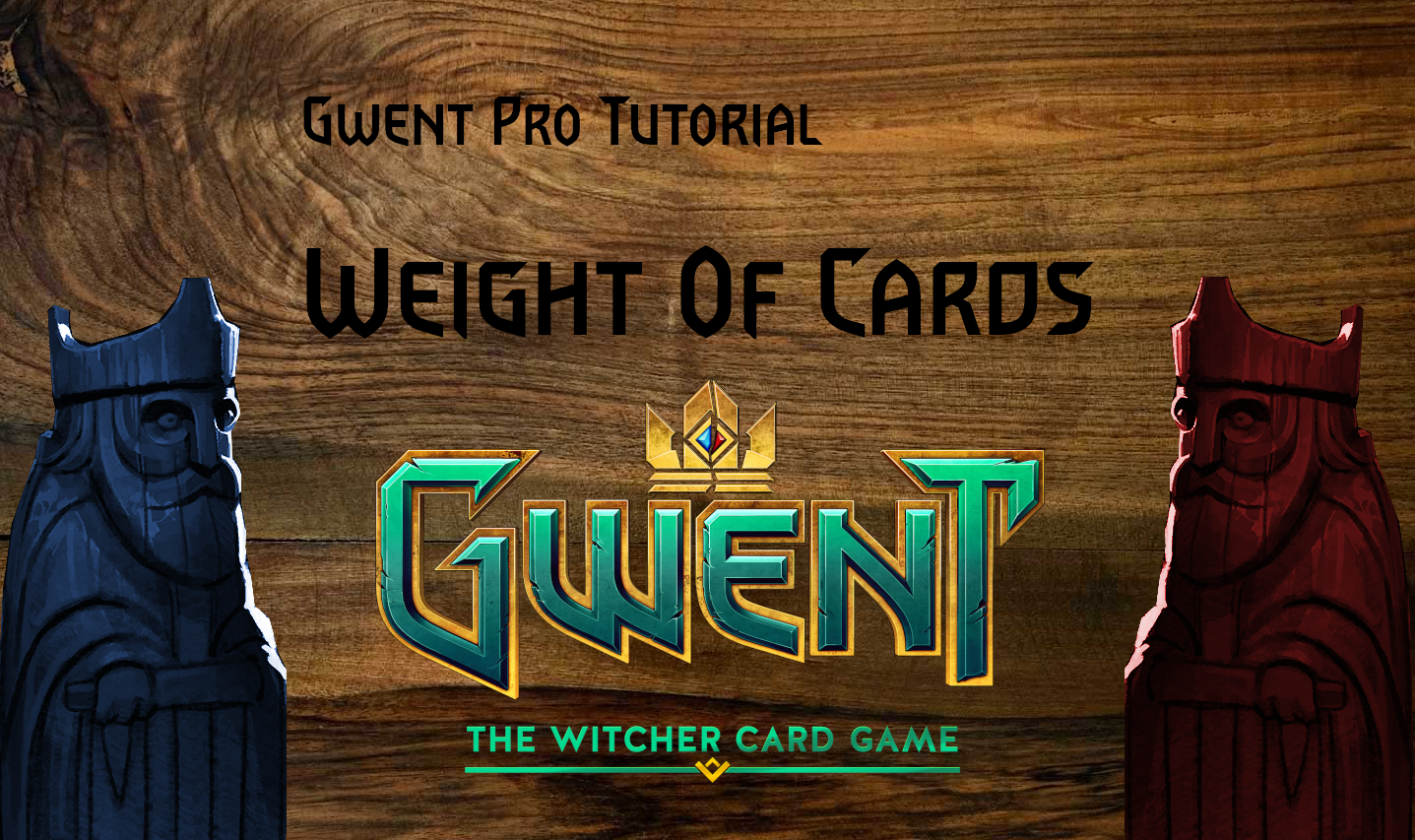Introduction
When learning deckbuilding in Gwent: The Witcher Card Game we discover that not all deck constituants are equally important.
In the past chapters of Gwent Pro Tutorial we investigated some similar deckbuilding topics. If you haven’t heard about them yet, check out ‘The Deckbuilding Rule Of 16’, and 3 Awesome Deckbuilding Lifehacks Used By Gwent Pro Players.
In this article we would reinforce our understanding of cards impact (weight) with deep thought and computer simulation.
Accessibility And Crossing Out
18/25 cards are guaranteed to be found in a full game of Gwent with no thinning (recommend you to read GM&P2: Mulligans, Accessibility & Thinning Paradox for derivation). Consequently, no more than 7 cards could be missed.
Neglecting real Gwent issues, like forced commitment in R1/R2, if cards could be ordered from strongest to weakest (1 to 25), then only Top17 matters for R3. That’s because hand capacity is 10 and at worst 7 cards from ideal hand are missed . Such worst case scenario implies that none of the remaining cards got missed, in which case 7 next best cards must be in hand (again, in reality we may for example risk swap of ‘17th ‘ for ‘1st ‘ in the last mulligan, in which case a single one from Bottom 8 group could be drawn instead of ‘1’; more than one brick should never happen)
As in 97% of games in fact we see 19 or more cards (98.1% from blue; 96.0% from red), we could arrive at ‘The Deckbuilding Rule Of 16’ using this logic. The derivation and interpretation is a bit different though. We simply say: it is extremely unlikely that more than 16 best cards from your deck would matter for Round 3 power.
Core, Subs And Bricks
Top10 cards in hierarchy forms the core of deck – those cards are always wanted in hand and couldn’t be swapped for anything better.
The core more often than not wouldn’t be completed. There is ~80% chance to draw a single card in Gwent, which means that two core cards are missed on average. These need to be replaced in R3 hand. Cards ’11’ to ’17’ in the deck are possible subs.
Finally ’18’ to ’25’ cards in hierarchy are effectively ‘bricks’ – we want to avoid playing those cards during the game. And we would manage to do so in R3 for sure but for last mulligan brick scenario.
Simulation
We would use GR (Gold Rush) mulligan algorithm as described in GM&P4.
- 25 cards labeled by position in power hierarchy (‘1′-’25’)
- 3 rounds, red coin
- 3 worst cards removed from hand after R1, none removed after R2 (5 mulligans in R3)
- Mulligans according to raw GR algorithm; mulls stopped only if having best possible hand.
- 100k random deals sample
Results

In the ‘Subs’ region:
’11’: 63%
’12’: 44%
’13’: 25%
’14’: 12%
Simulation results show that in practice the last meaningful card for R3 is ’14’, which is even more strict than ’16’ or ’17’ rules of thumb presented earlier.
The ’15’ to ’25’ cards are effectively bricks from R3 viewpoint. Note how weakest cards in the deck are most likely to brick. That’s because in GR algorithm weakest cards are mulled back to deck, while a bit stronger ones get played (removed) in R1. If not fighting for R1, human player may reduce brick risk by dropping them on the board and mulliganing a bit stronger ones, but it is not a natural gameplay.
Observations
Cards hierarchy is not set in stone, and one deck may have different power hierarchy for every matchup.
The importance of subs power decreases rapidly with #. While 11th would be more often than not a part of R3 hand (63%), and 12th also may have some impact (44%), the contribution of the 13/14 is not so relevant. Usually there is no reason to put more than 12 long R3 oriented cards in the deck and the rest should be composed with R1/R2 play in mind (Preparation Team). It is enough if ’13’/’14’ power is just not far off from meta level.
Closure
More analyses using similar simulations to follow after Top64 Qualifier. Hope you learned something useful about weight of cards in Gwent deckbuilding with respect to Round 3. Stay tuned!

